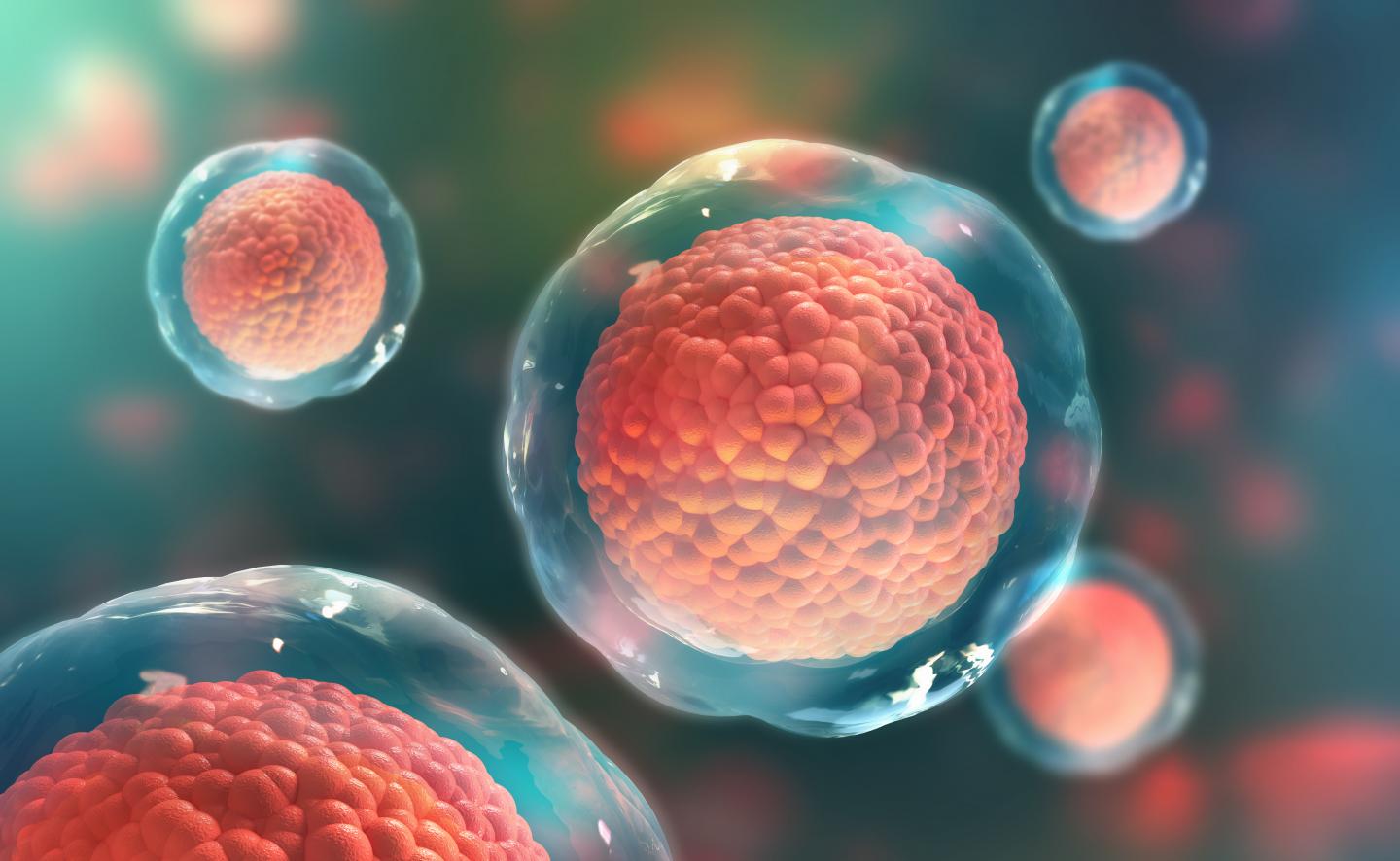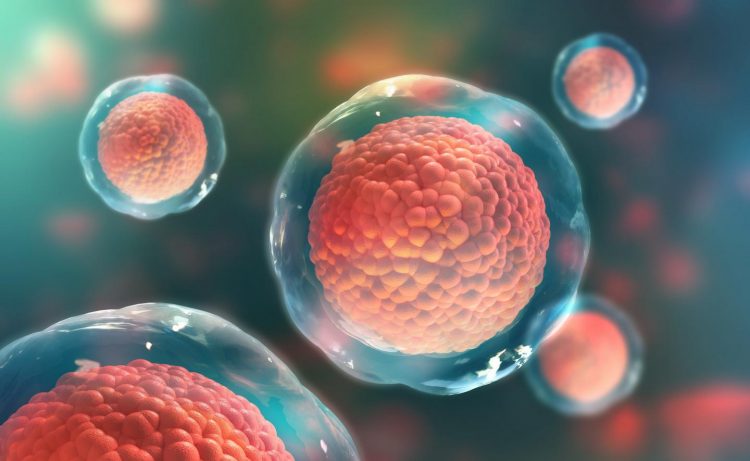Using a newly synthesized compound and advanced immunofluorescence techniques, scientists uncover novel signaling mechanism in cancer and also propose new channel of treatment

Credit: © Tokyo University of Science
Of the various different functions that proteins perform in a cell, a crucial one is the recognition and transmission of certain “signals,” collectively referred to as signal transduction. Receptors (proteins) on the cell surface recognize certain molecules and then initiate a chain of biochemical events inside the cell. These biochemical events are responsible for cellular activities such as multiplication, survival, etc. Needless to say, any perturbation of this “biochemical signaling” can be extremely detrimental to the cell, even leading to cancer in some cases. But, it is possible to target defective biochemical signaling pathways within a cell to treat cancer, provided the underlying mechanisms are studied thoroughly. This is exactly what a group of scientists from Japan set out to do in their study published in Cell Communication and Signaling. This research group–whose study was supported by Japan Agency for Medical Research and Development (AMED)–was headed by Assoc. Prof. Yuuki Obata from Tokyo University of Science (also National Cancer Center), and consists of Prof. Isamu Shiina (Tokyo University of Science), Prof. Ryo Abe (Tokyo University of Science and Teikyo University), Dr. Toshirou Nishida (National Cancer Center), and Prof. Koji Okamoto (National Cancer Center).
A certain signaling receptor protein called KIT tyrosine kinase functions in the growth and survival of different types of cells, including hematopoietic cells (the progenitors of all blood cells), mast cells (a type of immune cells), and interstitial cells of Cajal (electrical pacemakers in gastrointestinal tract). Active mutations of this protein have been identified in several cancers, such as mast cell leukemia (MCL), gastrointestinal stromal tumor (GIST), and acute myeloid leukemia (AML). In MCL, the mutations D816V (human) and D814Y (mouse) are frequently found; here, the mutated KIT protein “mislocalizes” in a cellular compartment called the “endolysosome” (EL). In GIST, mutated KIT accumulates in and conducts cancer-specific signaling from the Golgi, the site in a cell where macromolecules are produced, modified, and packaged, especially proteins. Active KIT mutations have been found in about 10% of core binding factor AML (CBF-AML) patients; these are also associated with poor prognosis in AML. However, it remains unclear whether KIT transduces signals from intracellular compartments in AML. The research group from Japan aimed to answer this question by using a newly synthesized compound called M-COPA (along with other existing ones) that targets intracellular transport. According to them, this also represents an attractive strategy to combat cancer. Prof Shiina candidly says, “We wanted to investigate the anticancer effect of the new anticancer drug lead compound M-COPA synthesized at our university against hematological cancers (leukemia, lymphoma, etc.).“
Apart from D816V, another major active KIT mutation in AML is N822K. D816V has been characterized extensively, but the signaling platforms and mechanisms of N822K are relatively unknown. Also, before this study, it was unclear how the mutated KIT and where the downstream signaling molecules are activated. The scientists investigated the relationship between the localization of KITN822K (KIT protein carrying the N822K mutation) and its activation in an AML cell line, Kasumi-1. The scientists found that in AML cells, KITN822K mislocalized to and accumulated in the EL. Newly produced KIT in the endoplasmic reticulum (ER) travels to the cell membrane via the Golgi and then relocates to EL. However, immunofluorescence experiments (those that use antibodies against the mutated KIT, tagged with fluorescent dyes for identification) showed that KIT was activated in the Golgi. KIT activation on the Golgi was also found in other leukemia cells that have the receptor mutation.
Next, Prof. Shiina and colleagues found that in the Golgi in AML cells, KITN822K also activates downstream signaling proteins called AKT, ERK, and STAT5. They did this by using specific compounds that target intracellular transport of proteins: brefeldin A (BFA), 2-methylcoprophilinamide (M-COPA) (inhibitors of transport from ER to the Golgi), and monensin (inhibitor of Golgi export). They found that in cells treated with BFA or M-COPA, KIT was retained in the ER. This also decreased the auto-phosphorylation of KIT and thereby its downstream signaling. Suppression of Golgi export of KIT using monensin did not suppress the KIT signals, which told the scientists that mutated KIT carries out cancer signaling specifically at the Golgi.
So, what are the future applications of this study? Small molecule TKIs (tyrosine kinase inhibitors) and antibodies against RTKs (receptor tyrosine kinases) have been developed to suppress cancer proliferative signaling using mechanisms similar to the ones described above. According to Prof. Shiina and the group, this study reveals that the novel compound M-COPA can be used to block transport of KIT from the ER to the Golgi (where it is activated and carries out downstream oncogenic signaling). The scientists say that the compound M-COPA has applications such as treatment of patients with AML, improved prognosis for these patients, and improvement in the quality of life of these patients. Prof. Shiina concludes by stating, “Currently, the synthesis of various M-COPA analogs is progressing every day at our university, and their inhibitory effects against hematological cancers and solid cancers (stomach cancer, lung cancer, ovarian cancer, etc.) are being verified.”
###
About The Tokyo University of Science
Tokyo University of Science (TUS) is a well-known and respected university, and the largest science-specialized private research university in Japan, with four campuses in central Tokyo and its suburbs and in Hokkaido. Established in 1881, the university has continually contributed to Japan’s development in science through inculcating the love for science in researchers, technicians, and educators.
With a mission of “Creating science and technology for the harmonious development of nature, human beings, and society”, TUS has undertaken a wide range of research from basic to applied science. TUS has embraced a multidisciplinary approach to research and undertaken intensive study in some of today’s most vital fields. TUS is a meritocracy where the best in science is recognized and nurtured. It is the only private university in Japan that has produced a Nobel Prize winner and the only private university in Asia to produce Nobel Prize winners within the natural sciences field.
Website: https:/
About The Japan Agency for Medical Research and Development (AMED)
AMED was established in 2015 for the advancement of medical discoveries that make life better for everyone. AMED’s mission is to fast-track medical R&D with an alliance and cooperativity of the ministries (CAO, METI, MEXT and MHLW). AMED provides seamless support on medical research, from basic research to clinical applications, by centralizing grants in the field of medicine. Based on effective partnerships and innovative collaboration, AMED pursues medical breakthroughs through an approach consisting of three vital components; Funding for medical studies and research facilities, Linking organizations, institutions and researchers, and Promotion for the practical application of beneficial research outcomes.
Website: https:/
Media contacts:
The Tokyo University of Science:
Tsutomu Shimizu, Public Relations Divisions
Email: [email protected]
The Japan Agency for Medical Research and Development (AMED):
Division of Cancer Research, Department of Research Promotion
Email: [email protected]
National Cancer Center:
Office of Public Relations, Strategic Planning Bureau
Email: [email protected]
Media Contact
Tsutomu Shimizu
[email protected]
Related Journal Article
http://dx.





